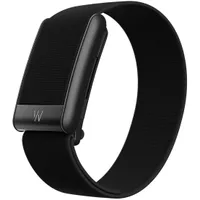I've been using the Whoop Band 5.0 for six months—here are four ways it's helped me sleep better and recover faster
It's available at its lowest-ever price right now in the Black Friday sales

I'm not a great sleeper. Formative years spent channel-hopping between MTV and Kerrang until well past midnight set me up with some unhealthy habits.
Now in my late 30s with an unruly toddler, I've been trying to curb these late-night screen sessions and establish a better bedtime routine. Enter the Whoop Band 5.0.
I’ve worn this screenless activity tracker every day for the past six months and it's hoovered up plenty of metrics on how I exercise, recover and go about my daily business.
Most importantly, it’s taught me the value of sleep consistency.
Black Friday Whoop Band deals
This is the lowest price I can find on the Whoop Band 5.0. It comes with 12 months of access to the tier One membership, which includes insights on recovery, sleep and strain.
This deal comes with 12 months of access to the Peak membership, which will give you basic sleep, recovery and stress metrics, along with insights into your healthspan and pace of aging.
Good sleep consistency involves going to bed and waking up at similar times every day of the week—yes, even on weekends.
Having this consistent sleep pattern keeps our internal body clock in check, triggering the timely release of hormones like melatonin and cortisol that aid sleep, metabolism and immune function.
It's why my recovery and sleep scores tick up when I achieve a steady sleep pattern, but plummet when I disrupt the schedule.
Start your week with achievable workout ideas, health tips and wellbeing advice in your inbox.
Research even suggests that sleep consistency is actually more important than the amount of sleep you get, with one 2024 study finding that sleep regularity, rather than duration, is a stronger predictor of mortality risk.

The Whoop Band measures sleep consistency by tracking bed and wake times over a four-day period—it recommends aiming for a score between 80-90%.
Having pored over my data for the past six months, here are four ways I've adjusted my routine to boost consistency, sleep better and recover faster.
1 I now exercise earlier in the day
Maintaining a consistent exercise pattern has a similar knock-on effect for sleep.
I now prefer to do my toughest workouts first thing and save more relaxing sessions, like yoga or stretching, for after work or just before bed.
2 I spend more time outside
Daylight plays a key role in regulating circadian rhythm.
I get outside as early as I can and maximise daylight exposure by walking a little bit further to work or going for a mid-morning stroll around the block.
3 I always read before bed
Another trick I’ve learned is to limit blue light exposure from screens at least an hour before bed.
Instead of scrolling, I stick my nose in a book. It might only be for five minutes. Often I barely finish a page, but it helps me drift off faster and sink into deep sleep for longer.
4 I've said goodbye to alcohol and caffeine
Okay, not completely. I'm not a saint.
But having been partial to a post-lunch cortado or full-bodied red with dinner, I now swerve these temptations the day before important events to minimize any disruption to my sleep scores.
Making these changes has helped me sleep more soundly, wake up fresher and bounce back quicker—and with the Whoop 5.0 band I have the data to show for it.

Sam Rider is an experienced freelance journalist, specialising in health, fitness and wellness. He is also a REPS level 3 qualified personal trainer.
You must confirm your public display name before commenting
Please logout and then login again, you will then be prompted to enter your display name.

